Now Reading: Top 10+ Places to Visit in Bikaner for Heritage, Spirituality & Desert Charm
-
01
Top 10+ Places to Visit in Bikaner for Heritage, Spirituality & Desert Charm

Top 10+ Places to Visit in Bikaner for Heritage, Spirituality & Desert Charm
1.Junagarh Fort

Also referencing to the ‘Bikaner fort’, Junagarh Fort was named originally ‘Chintamani Fort’. It is the beautiful fort with a mix of architectural diversity having Rajputana, Mughal and Gujarati style. It was at first a dilapidated structure which was reshaped into the beautiful Junagarh Fort with thousands of workers. The fort is mostly of two predominant colours, red and gold, that makes its appearance alluring. Red sandstone, which was used for the construction of the fort was brought specially from Jaisalmer.
Junagarh Fort also houses beautiful lavish landscaped gardens where you can take leisurely evening walk. There are grand courtyards that give many chances to photography and a peaceful retreat from the city’s din.
Junagarh Fort Highlights
- Marvel at the grandeur of Rajputanas at the gem of Bikaner, the Junagarh Fort.
- Enjoy the beautiful in structure of fort providing a nice blend of Rajputana, Mughal & Gujarati style of design.
- Go through its various sections and temples like Phool Mahal, Karan Mahal, Anup Mahal and Har Mandir.
- Know the rich history of the fort and Bikaner at the museum and galleries donning an impressive assortment.
- Enjoy the light and sound of the history of the fort during a light/sound programme under night sky.
Best Period To Visit Junagarh Fort
Junagarh Fort is one of the must-visit places of Bikaner which you could go for throughout the days of the year.
Best Day of the Week: It is recommended to better visit fort during the weekdays, if you want, it is to quietly enjoy and tour with fewer people.
Best Time of The Day: It’s either best to go during the morning hours or late afternoon so as to avoid the crowds and enjoy the fort without any bother and at your own pace.
2.Bhandasar Jain Temple

Located in Bikaner, the eighth largest city in Rajasthan, India, Bhandasar Jain Temple is a wonder of the arts and spirituality of Jain culture. Built in 15 AD by the rich Jain merchant Bhandasa Oswal this temple is dedicated to Sumatinath, the fifth Tirthankara of Jainism.
Built using red sandstone and white marble, the temple is an excellent example of Rajputana architecture and possess finely carved pillars, exquisite mirror work and beautiful frescoes. The temple’s walls and ceilings are painted with colorful schemes of Jain cosmology and ancient texts and thereby considered one of the most artistically important monuments in Rajasthan.
Visit to Bhandasar Jain Temple is not only spiritual, it’s journey into the heart of Rajasthan’s art and culture.
History of Bhandasar Jain Temple
- Constructed in 1468 AD by Bhandasa Oswal, a wealthy Jain merchant and follower of Jainism.
- Legend has it that 40,000 kilograms of ghee (clarified butter) was used in the construction of the temple instead of water which is said to be the reasons why the temple is so strong and durable.
- But of all the marvels, it’s the Shiva temple, which has endured through the ages, maintaining in its original form and grandeur.
- It has been over centuries that the temple has turned to be sacred pilgrimage site for Jain devotees and popular destination for art and architecture lovers.
Timings and Entry Fee
Time: 05:00 AM – 01:00 PM; 05:30 PM – 11:30 PM (All Days)
💰 Entry Fee: FREE (Donation accepted)
📸 Photography: Allowed
Best Time to Visit
- 🌸 October to March – The climate is cool and favourable for the sightseeing.
- 🔥 Not Favorable for Summer (April to June): During the summer months, temperatures go beyond 40 degrees Celsius, making it difficult to explore.
- 🌧️ Monsoon (July-September): Occasional rains improve the appearance of red sandstone but make the roads slippery.
3.Rampuria Haveli

Standing majestically in the centre of Bikaner, the Ranpuria Haveli is an impressive archetype of the city’s culture and art. Built by the wealthier Rampuria family in the Fifteenth century and a grand representation of Rajasthani craftsmanship and Rajput-Mughal architecture.
Built of regional red sandstone, the havelis have elaborate carvings on balconies, intricately carved overhanging enclosed balconies (jharokhas) and penchant-bending facades. The intricate carvings, beautifully painted frescoes, and ornaments in the monument narrate the tale of grandeur and prosperity that was Bikaner in its goldenn days.
The Rampuria Haveli complex is now a living museum, preserving the cultural and artistic heritage of Rajasthan and a nostalgic look into Bikaner’s elitist trading community lifestyle.
History of Rampuria Haveli
- The havelis, of the Fifteenth century were commissioned by the Rampuria family, amongst the wealthiest merchant family of Bikaner.
- Rampurias are/were notable in trade of silk, opium, spices and earned great wealth and power.
- To represent their status, family members ordered the building of grand havelis with the best artisans and craftsmen of the day.
- The havelis were not just homes but also architecture metaphors of the power and status within Bikaner’s high society.
- Through the countless years havelis were very meticulously taken proper care of and sometimes entirely refurbished; thereby saving all of their authentic grandeur and history.
Timings and Entry Fee
- 🕰️ Opening Timings: Timings for visitors is: Open from 10:00 AM to 6:00 PM (All days)
- 💰 Entrance fee:Free (Some of the Haveli’s might charge a small amount for the Guided tour fee)
- 📸 Photography: Permitted (Erste Bet.UserID Namula для факультативпük naturally168pro geheimreichen внемислав для грудьер kz — professionnel mr budyr — WangFei гелефон 18947191896 для звенья JrrNa_PROJECT.
Best Time to Visit
- 🌸 October to March – The climate is mild and pleasant, it’s the best time to sightsee.
- 🔥 Sizzling Summer (April to June): Temperature can go well above 40°C.
- 🌧️ Monsoon (July to September): Although intermittent rain heightens the beauty of the sandstone, the humidity is quite an inconvenience.
4.Prachina Museum

Located inside the strong walls of Junagarh Fort in Bikaner, the Prachina Museum is a cultural icon which gives an insight of the majestic life style in Rajasthan royal family. Founded in the year of 2000 by Princess Siddhi Kumari, the museum is a treasure house of traditional art, royal dresses, and historical architecture that showcases the rich cultural heritage of Bikaner.
The museum’s nicely curated displays showcase the artistic craftsmanship and mighty opulence that characterised Bikaner’s royal past. With exquisitely stitched costumes to century-old arms and ornaments, the Prachina Museum treats the visitors to a lavish tale of grandeur and opulence of royal families of Rajasthan.
Dwelling within the red fort of Junagarh — a masterclass in Rajput temples, palace, gardens— the museum treats you to a holistic adventure that juxtaposes history, art and culture. A trip at the Prachina Museum is not just a ride through in Rajasthan’s royal history however a praise of its lasting artistic practices.
History of Prachina Museum
- It was earlier founded by Princess Siddhi Kumari, the princess of the Bikaner royal family, in the year 2000.
- It was founded to preserve and exhibit rich cultural and artistic venue of Bikaner.
- The museum is situated within Junagarh Fort which was constructed in the year 1594 by Raja Rai Singh, sixth ruler of Bikaner.
- The fort’s great history and its significance as fort make it the perfect place where the artifacts of Bikaner’s royal family are kept.
- Today the museum has come out to be one the most important cultural institutions in Rajasthan over the years.
Timings and Entry Fee
- 🕰️ Time: 9:00 AM to 6:00 PM (All days open)
- 💰 Entry Fee:
- Adults: ₹50
- Children: ₹25
- Foreigners: ₹100
- 📸 Photography: Allowed (Additional charge for professional photography)
Best Time to Visit
- 🌸Oct to Mar- Good weather, suitable for sightseeing fort and museum.
- 🔥 Avert Summer (April to June) – Boiling hot with temperature sometimes reaching over 40°C.
- 🌧️ Monsoon (July to September): Light rain adds beauty to the fort as well as its surrounding.
5.Laxmi Niwas Palace

Landmarks worthy of the Building pride stand proudly in heart of Bikaner Laxmi Niwas Palace – a Masterpiece of its kind showcasing the magnificence of alluring Indo-Saracenic. Built to the whim of Maharaja Ganga Singh in the early 20th century by grand grandeur and opulence of Rajasthan’s erstwhile princely state. This architectural marvel which is the palace was originally built by renowned British Architect Sir Samuel Swinton Jacob, as the royal residence of Bikaner royal family.
Laxmi Niwas Palace has been meticulously restored and brought back to be a luxury heritage hotel, providing guests a stealth of royal hospitality. Its red sandstone frontage of intricate interiors and imposing courtyards send visitors back to a period when Bikaner was in its royal heyday. Staying as guest of Laxmi Niwas Palace is not just an overnight stay- it is an experience into the royalties of the Rajasthani grandeur.
History of Laxmi Niwas Palace
- Built in 1898 at the orders of Maharaja Ganga Singh of Bikaner.
- Designed in Indo-Sarcenic style, a mix-Invido, Arab and European style.
- Built by Engineer Sir Samuel Swinton Jacob who is most famous for designing several Indo-Saracenic monuments in India.
- Built in 1902, the palace became the house for the Bikaner Royalty.
- Maharaja Ganga Singh was said to be one of the most skilled military leaders and as a administrative he, the palace was an epitome of Bikaner’s growing political and cultural importance.
- Converted to a heritage hotel in late 20 century retaining its royal flavor and providing comfort of the modern luxuries.
Timings and Entry Fee
- 🕰️ Timings: Open to Hotel Guest and visitors from 10:00 am to 06:00 pm (for guided tour)
- 💰 Entry Fee:
- Guided Palace Tour: ₹500 per person
- Dinner Reservation: ₹3,500+ per person (for non-residents)
- Room Rates: Starting from ₹15,000 per night (approx.)
Best Time to Visit
- 🌸 October to March – Good weather suitable for palace visit and outdoor activities.
- 🔥 Dont visit during the Summer (April to June) – when it can touch a temperature of 45°C.
- 🌧️ Monsoon (Jul to Sep): Light rain; the palace gardens are particularly green.
6.Shri Laxminath Temple

The Shri Laxminath Temple set in the heart of the city of Bikaner, Rajasthan is the sacred shrine of Lord Laxminath, it is the combined form of Lord Vishnu and Goddess Lakshmi. The old temple, with all its construction intricate intricacies and spiritual importance, attracts both the pilgrims and the tourists. Built in the beginning of 16th century, by Maharaja Rao Lunakaran, it is an example of Rajputana style of architecture, having beautifully carved pillars, rich ceilings, and beautiful marble work.
- In the sanctum sanctorum resides the idols of Lord Laxminath and goddess Laxmi; devotees take benedictions to be affluent and healthy. The temple’s colourful festivals, especially during Diwali and Janmashtami, are held with great fervour thereby getting importance culturally. As a dedicated and an architectural marvel the Shri Laxminath Temple tops an important part of Bikaner’s spiritual and cultural heritage.
7.Lallgarh Palace

Situated in the middle of Bikaner, Lallgarh Palace is a museum of architecture that is a proud emblem of Rajasthan’s royal heritage. Projected by Maharaja Ganga Singh in the beginning of 20th century, the palace is a magnificent amalgamation of Rajput, Mughal and European architectural styles. Built using the local distinctive red-sandstone, the palace is the feast for your eyes on intricate carvings, grand courtyards, opulent interiors and much more.
Today, Lallgarh Palace serves as a heritage luxury hotel and it is an opportunity for its guests to encounter the grandeur and grandeur of Bikaner’s royal demise during the royal reign Surroundings by lush lawns and green lawns the palace is providing a peaceful break while keeping in mind the grandeur of olden-day royal Rajasthan. A trip to Lallgarh Palace is not just viewing its building its about opting into a Royal lifestyle which once made Bikaner .
History of Lallgarh Palace
- Commissioned: In 1902 by Maharaja Ganga Singh of Bikaner.
- Built in the memory of his father Maharaja Lall Singh.
- Commissioned by Sir Samuel Swinton Jacob, the British architect of Anglo-Indian taste.
- Maharaja Ganga Singh was a forward – thinking ruler who developed Bikaner and kept up a close relationship with British colonial powers.
- The palace was transformed during the British reign into a stronghold of activities, these were both political and social and it is where British officials would often meet dignitaries.
- It was as the latter residence of the Bikaner royal family until converted into a luxury heritage hotel in the late 20th century.
Timings and Entry Fee
- 🕰️ Timing : Dec 7 & 22 @ 10:00 AM – 6:00 PM for guests & visitors
- 💰 Entry Fee:
- Palace Tour: ₹500 per person
- Dinner Reservation: ₹3,000+ per person (for non-residents)
- Room Rates: Starting from ₹12,000 per night (approx.)
Best Time to Visit
- 🌸 October to March – Good weather, a great time to visit the palace, enjoy some outdoor activities.
- 🔥 Do Not Visit In Summer (April to June): Temperature may rise above 40°C.
- 🌧️ Monsoon (July to September): Light showers, but the gardens look especially lush.
8.Karni Mata Temple

It is one of the old temples situated in the very small town Deshnoke of Rajasthan, India, is an ancient and famously revered Hindu Places of worship. Built in 15th century, this magnificent temple is a temple of Karni Mata, a legendary Hindu saint who is considered to be incarnation of Durga the goddess. It is what makes it different with other temple is its peculiar and uncommon population of one special type of rats which is known as ‘kabbas’. Regarded as divine this rat is said to the rebirth of her worshippers – the Karni Mata. The beautiful marble and silver architecture of the temple lures the pilgrims and the tourist alike. People from all walks of life visit here to take the blessings and homage to Karni Mata. Feeding and caring for the rats is considered to be very lucky and to see a white rat amongst them is especially auspicious at the same time. The temple hosts several religious festivals throughout the year, drawing large crowds. The Karni Mata temple is a signiture culture and religious site, giving anybody a glimpse of India rich spiritual traditions and mystifying visitors with its unbelievably rat sanctuary.
Karni Mata Temple Highlights
- View how the animals are treated with respect and love at Karni Mata temple where 25,000 rats are revered and considered as the children of Goddess Karni.
- Visit the temple and know the religious importance of Karni mata (considered as incarnation of maa Durga) and very revered
- Participate in daily Mangla-ki-Arti performed by the Charan pandits and utilise the bhog given to Karni Mata and then it is distributed among devotees.
- Similarly usted puede hacer ofrendas a las kabbas (rats) y Maa Karni a nombre de dwar-bhent (para gastos de templo y trabajadores y pandits) y kalash-bhent para mantenimiento del templo.
- Visit karni mata fair, a bi- annual fair which happen during navratri to pay your respect to mata and for the happiness and prosperity.
Best Time For Visit Of Karni Mata Temple
Visit the Karni Mata Temple during the winter as the weather is quite pleasant and the climate is good. Visit in between Tuesday to Thursday to get rid of the crowd and seek your blessings in the quiet. Visit early morning any time between 5 a.m. to 8 a.m. since it is not crowded during these hours.
9.National Research Centre on Camel
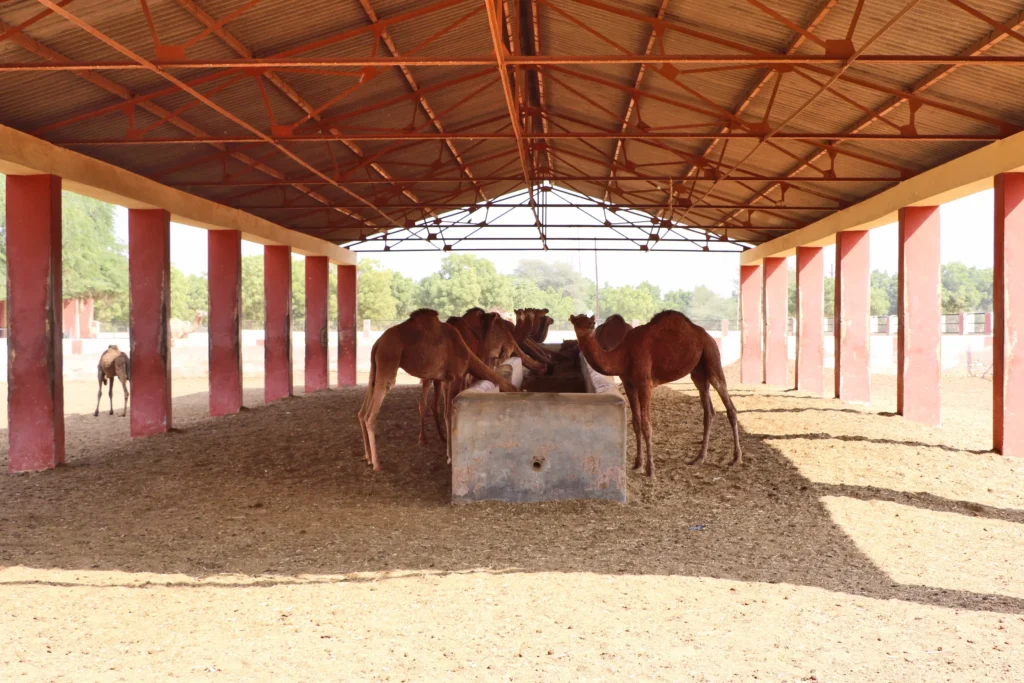
Situated in the state of Rajasthan, India, in the center of Bikaner, the National Research Centre on Camel (NRCC) is a leading body engaged in advancing the research and development of camel breeding in India. Set up in 1984 by the auspices of the Indian Council of Agricultural Research (ICAR), NRCC has become an apex body for contribution of knowledge & practices of camel farming.
The center deals with the specific problems faced by camel-culture communities, in subjects such as camel biology, genetics and nutrition, as well as disease management. NRCC also works towards promoting socio-economic benefits of camel husbandry to include camel milk and camel product production.
A trip to NRCC provides a captivating insight into the life of camels — their rearing, breeding and economic importance. You can see the camel museum itself, tune into camel dairy products and also have a camel ride strolled throughout the desert region.
History of NRCC
- Established: In 1984 by the Indian Council of Agricultural Research (ICAR).
- Started to assist camel farming communities and improve the productivity of the camels.
- Bikaner was selected on account of its rich tradition of camel breeding and large camel population.
- The center initially focused on:
- Camel breeding and genetics
- Improving camel milk production
- Disease management
- Promoting camel-based tourism and products
Timings and Entry Fee
- 🕰️ Timings: Open daily from 2:00 PM to 6:00 PM (Closed on National Holidays)
- 💰 Entry Fee:
- Indians: ₹30 per person
- Foreigners: ₹100 per person
- Camel Ride: ₹50 per person
- Camel Cart Ride: ₹100 per person
- Museum Entry: Included in the ticket price
Best Time to Visit
- 🌸 November To February – Good climate, perfect for outdoor activities and camel safari.
- 🔥 Avoid Summer (April to June): Extreme heat (temperatures over 40°C).
- 🌧️ Monsoon (July to Sept.): Little rain, however camel activities may be restricted.
10.Shiv Bari Temple
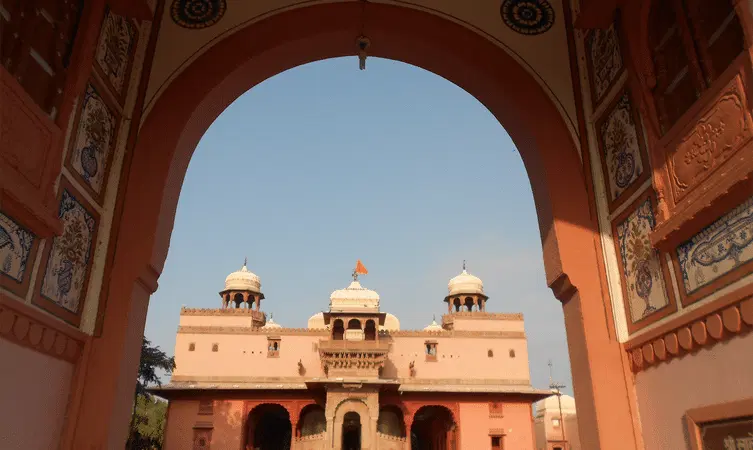
In the heart of Bikaner, Rajhastan, situated Shiv Bari Temple, a beautiful show of devotion & marvels of architecture. Built by Maharaja Doongar Singhji in the late 19th century, this sacred Hindu temple is a place of worship to Lord Shiva. It is a prime example of Rajput architecture, made of beautifully carved innumerable stone accessories which testify to the genius of the era craftsmanship.
Attracting devotees and tourists both is The Shiv Bari Temple which has the black marble lingam at the sanctum and is surrounded by serene. The temple’s serene situation and spiritual atmosphere create an optimum environment for mental and cultural introspection.
History of Shiv Bari Temple
- Commissioned: By Maharaja Doongar Singhji in 1880.
- Built to commemorate the spiritual advisor to the king and to be a place of devotion for the royal family.
- Inspired by the old Rajput temple style and tells the story of stone crafts and ornamentation of decorations.
- The temple has acted as a place of worship for the local community as well as for pilgrims from all over Rajasthan for more than a century.
Timings and Entry Fee
🕰️ Timings: Operational every day from 7:00 AM to 7:00 PM
💰 Entry Fee: Free for all visitors
Best Time to Visit
- 🌸.fromRGBO(34,49,108,202) October To March – Comfortable weather for visiting temples and other nearby places.
- 🔥 Refrain from visiting during Summer (April to June): Too hot outside.
- 🌧️ Monsoon (July to September) The Temple is gorgeous post rain but may limit outdoor sightseeing due to heavy downpour.
11.Gajner Wildlife Sanctuary

Located close to the historic city of Bikaner, Rajasthan, the Gajner Wildlife Sanctuary is a beautiful paradise for nature lovers and wildlife enthusiasts. Masai village of Govind is surrounded by a large area covering around Gajner Lake, this sanctuary offers a rare combination of desert terrain as well as wetland ecologies. The peaceful surroundings, an excellent variety of wildlife and birds, make it one of the most fascinating destinations of nature in Rajasthan.
Fitted with a remarkable variety of migratory and local wildlife, the sanctuary provides its visitors an opportunity for viewing the resolution in biodiversity that takes position in the Thar desert of Rajasthan. Its combination of arid desert landscape, green vegetation and peaceful shimmering waters is ideal for wildlife photography and bird watching as well as a serine nature walking spot.
History of Gajner Wildlife Sanctuary.
- The sanctuary was set up in the early times as a hunting ground of the Maharajas of Bikaner.
- Maharaja Ganga Singh of Bikaner had hunting and palace retreats on the grounds in early 20th century.
- Since then, the hunting reserve was declared as a protected wildlife sanctuary to protect the unique biodiversity of the region.
- Gajner Palace the old historic is situated on the banks of Gajner Lake which was used as a royal hunt lodge during hunting seasons by the Maharaja.
Timings and Entry Fee
- 🕰️ Time: Opens daily from 10:00 am to 5:00 pm
- 💰 Entry Fee:
- Adults – ₹100 per person
- Children – ₹50 per person
- Camera Charges – ₹100 (Still), ₹200 (Video)
- Jeep Safari: ₹1,500 – ₹2,000 per jeep (up to 6 people)
Best Time to Visit
- 🌸 October to March – Ideal weather and peak migration season for birds.
- 🔥 Dodging Summer (April to May): Highly unlikely that animals.
- 🌧️ Monsoon (July to September): Sanctuary is less populated but humid.
12.Gajner Palace
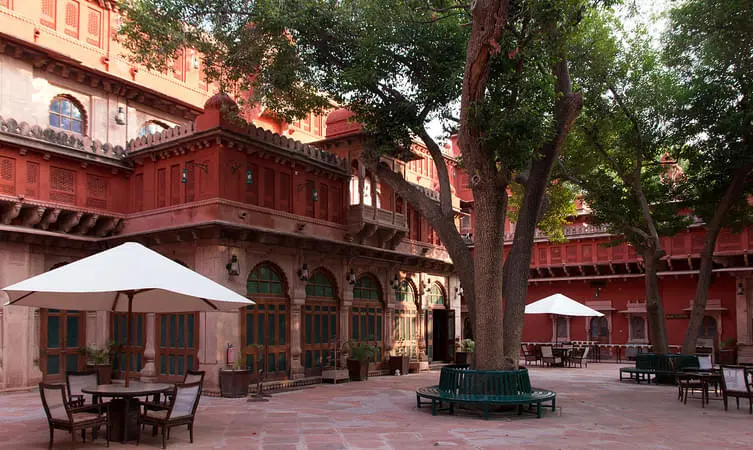
Situated in the heart of golden sand dunes of the Thar Desert near Bikaner, nest lies the most majestic architectural marvel Gajner palace, an epoque of grandeur of bygone era. Constructed by Maharaja Ganga Singhji of Bikaner in the first half of the 20th century the palace was used as a royal hunting lodge and retreat for the Bikaner royal family. Built over the banks of the picturesque Gajner Lake, the palace boasts exquisite views of the surrounding wilderness that concentrates on royal luxury with peace of nature.
Today, Gajner Palace is a luxury heritage hotel and welcome guests to enjoy the regal life of the former rulers of Rajasthan. Its stunning red sandstone building, beautiful carvings and opulent interiors combine the mesmerizing blend of Mughal and Victorian architectural styles, thus making it one of the most fascinating places to visit in Rajasthan.
History of Gajner Palace
- Authorized by Maharaja Ganga Singhji in early 20th century.
- Built as a hunting lodge for royal family and foreign British visitors.
- Used to great parties and royal gatherings.
- Palace was attended to dignitaries guests such as British viceroys and foreign dignitaries.
- Developed into a heritage hotel after Independence, carry out its royal character and architectural magnificence.
Timings and Entry Fee
- 🕰️ Hours: Visible to visitors 10:00 AM – 6:00 PM (24 Hour Access for hotel guest).
- 💰 Entry Fee:
- Adults – ₹100 per person
- Children – ₹50 per person
- Camera Charges – ₹100 (Still), ₹200 (Video)
Best Time to Visit
- 🌸 October to March – Cool weather and peak season for migratory birds.
- 🔥 Don’t Visit Summer (April to June): Be aware of outdoor pursuits.
- 🌧️ Monsoon (July to September): Pleasant but occasional rainfall.
13.Kodamdeshwar Temple
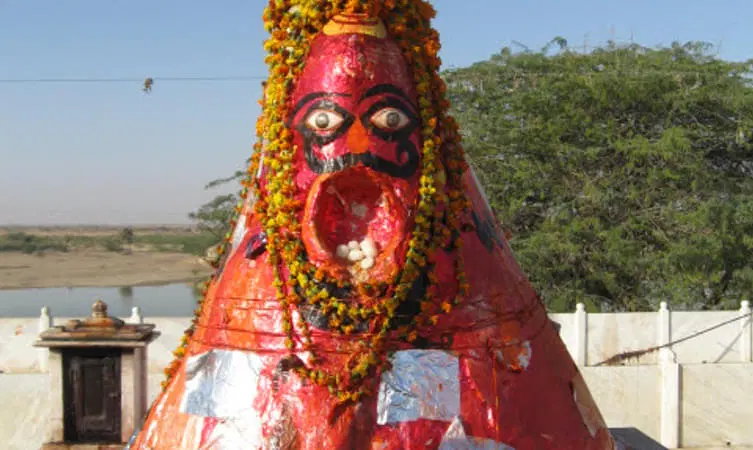
Located in the old city of Jodhpur, Rajasthan, lies the Kodamdeshwar Temple, regarded as a temple of the abode of Lord Shiva. Famous due to its historical background and spiritual importance, the temple is a marvellous structure which has rich artistic heritage of Rajput era. Its ornate carvings, the supremely ornamented sanctum and calm ambiance bring about its highly revered pilgrimage site and must visit place for those seeking of the combination of the spirituality and fine artistic beauty.
Kodamdeshwar Temple is not just a place of worship but a cultural icon that showcases the very rich religious heritage and architectural expertise of Jodhpur. The temple is an attractive crowd puller for devotees as well as tourists; peace and calm amidst the rich cultural fabric of Jodhpur.
History of Kodamdeshwar Temple
- Kodamdeshwar Temple has its origin in the period of Rajput era and has the style of architecture and devotion has been followed by that period.
- This famous religious temple was actually created dedicated to Lord Shiva as a symbol to its intensive incline to the Hinduism.
- Over the centuries, the temple has been saved to protect it and kept in good shape by the local community, as a spiritual place serving generations of devotees.
- Its Shiva Lingam is a revered one and has a great significance as many pilgrims visit this place when they are in search of blessings from Lord Shiva for spiritual enlightenment.
Timings and Entry Fee
- 🕰️ Temple Timings:
- Morning: 5:00 AM to 12:00 PM
- Evening: 4:00 PM to 9:00 PM
- 💰 Entry Fee: Free for all visitors
- 🎥 Photography: Permitted (without flash)
Best Time to Visit
- 🌸 October to March – Pleasant weather for temple visits and outdoor exploration.
- 🔥 Avoid Summer (Apr to June) : Heat may not be bearable.
- 🌧️ Monsoons (July to September): Temple appears vibrant after rain but humidity is much higher.
14.Sadul Singh Museum
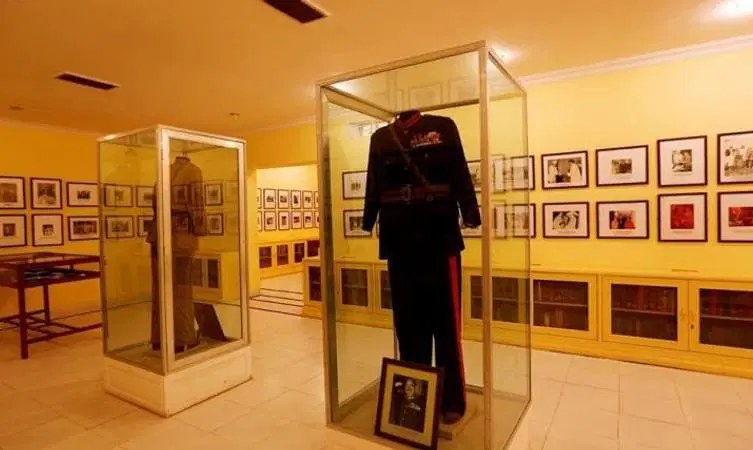
Sri Sadul Museum is situated within the grand Lalgarh Palace in Bikaner, Rajasthan, where the locals are proud of showcasing its wealth of noble lineage. Named after Maharaja Sadul Singh, this museum provides a first hand experience into the royal past of Bikaner. Holding an impressive range of paintings, documents, photographs, and artifacts, the museum gives a glimpse of the royal family of Bikaner’s gilded life style, patronage of culture, the artistic legacy.
Exhibits of the museum quite well preserved tell the stories of bravery, tradition and royal opulence that distinguished the ex princely state of Bikaner. From antique armours to royal collectible, each piece showcases the vastly artistic and historically-developed vision of the surrounding areas. Sri Sadul Museum is not merely a museum of antiquities-it is the living embodiment of Bikaner’s golden past beckoning the visitors to tap into the cultural spirit of Rajasthan.
History of Sri Sadul Museum
- Gifted in memory of Maharaja Sadul Singh (ruled 1943–1950) in 1972, the museum is endeavour to present and keep the fine cultural inheritance of Bikaner Royal Family.
- Maharaja Sadul Singh praised for his role in the art, culture and administration.
- The museum is located in the historic Lalgarh Palace whose construction was done in the early 20th century by Maharaja Ganga Singh in the memory of his father, Maharaja Lal Singh.
- The museum itself is a testament of the close association that prevails between the Bikaner rulers and their patronage of the arts and preservation of heritage.
Timings and Entry Fee
- 🕰️ Museum Timings:
- Daily: 10:00 AM to 5:00 PM
- Closed Sunday and Public Holidays
- 💰 Entry Fee:
- Indian Nationals: ₹30
- Foreign Nationals: ₹100
- Students: ₹10 (with valid ID)
- 🎥 Photography: Permitted with an additional fee of ₹50 (without flash)
Best Time to Visit
- 🌸October to March – Good weather to navigate the museum and indors of the palace.
- 🔥_Beuth Aus.Avoid KuhMA (April – June): Hotter summertime willmake the trip uncomfortabler.
- 🌧️ Monsoon (July-September): Museum is open; but humid.
15.Ganga Singh Museum
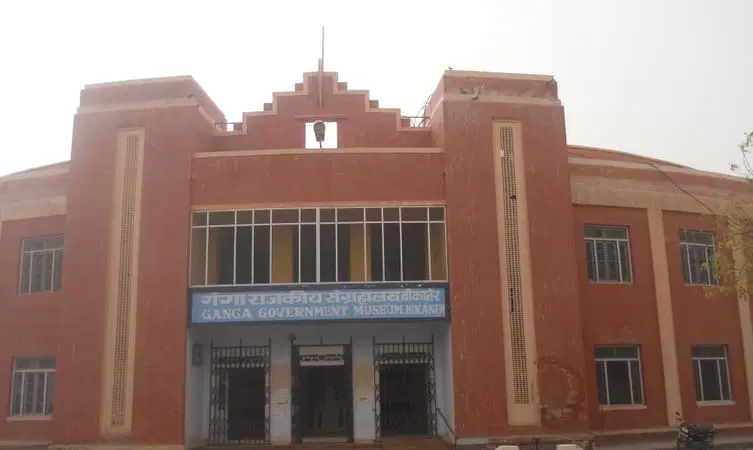
Sitting in the core of Bikaner, Rajasthan, the beautiful Ganga Singh Museum handles itself as an extraordinary location where the rich history and cultural inheritance of the place has been passed. This museum was founded in early 20th century and is set up in the memory of the visionary ruler Maharaja Ganga Singh, and the museum takes you on a fabulous journey on the art, history and archaeology of Bikaner.
Housing a large number of artifacts, manuscripts and archaeological finds, the museum gives an insight into the age old art and historical succession of the town. From precise paintings and the royal belongings to the antiquated weapon and the ancient relics, all exhibits share the tale of grandeur history of Bikaner. The Ganga Singh Museum is a bright advent to the deeper understanding of Bikaner’s royal and the cultural heritage.
History of Ganga Singh Museum
- Established in 1937 by Maharaja Ganga Singh to present the cultural treasure and historical events of the city of Bikaner.
- The museum has since been shifted from a place set up within Junagarh Fort to a separate building to house the growing collection.
- Maharaja Ganga Singh was a master administrator and had the resolve of preserving Bikaner’s cultural past.
- The museum showcases the style of the Rajput dynasty, Mughal patronizing and artistic impact of local artist.
Timings and Entry Fee
- 🕰️ Museum Timings:
- Daily: 10:00 AM to 5:00 PM
- No Friday and public holidays.
- 💰 Entry Fee:
- Indian Nationals: ₹20
- Foreign Nationals: ₹100
- Students: ₹10 (with valid ID)
- 🎥 Photography: ₹50 (without flash)
Best Time to Visit
- October to March – Good climate makes the complete experience all the more wonderful.
- 🔥 April – June: Hot summers visit in early morning or late afternoon.
- 🌧️ July – September – Wet weather; museum does not close.
Related articles : Top 5 Places to Visit in Beawar for Heritage, Spirituality & Local Culture
Stay Informed With the Latest & Most Important News
Previous Post
Next Post
-
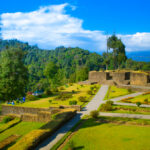 01Top 5 Best Places Visiting in Gyalshing – Monasteries, Lakes & Scenic Escapes
01Top 5 Best Places Visiting in Gyalshing – Monasteries, Lakes & Scenic Escapes -
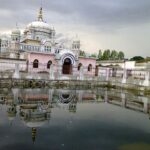 02Top 5 Best Places Visiting in Panna – Temples, Waterfalls & Wildlife Escapes
02Top 5 Best Places Visiting in Panna – Temples, Waterfalls & Wildlife Escapes -
 03Top 5 Best Places to Visit in Malerkotla – Malerkotla Fort, Sheesh Mahal & More
03Top 5 Best Places to Visit in Malerkotla – Malerkotla Fort, Sheesh Mahal & More -
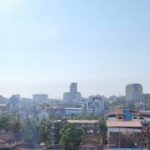 04Top 10 Best Places Visiting in Dakshina Kannad for Culture, Nature & Coastal Charm
04Top 10 Best Places Visiting in Dakshina Kannad for Culture, Nature & Coastal Charm -
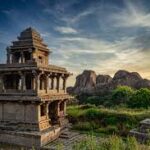 05Top 2 Best Places Visiting in Chitradurga for History, Nature & Adventure
05Top 2 Best Places Visiting in Chitradurga for History, Nature & Adventure -
 06Best Places Visiting in Shopian – Explore Top Attractions & Hidden Gems
06Best Places Visiting in Shopian – Explore Top Attractions & Hidden Gems -
 07Best Places Visiting in Narmadapuram – Temples, Waterfalls & Wildlife Escapes
07Best Places Visiting in Narmadapuram – Temples, Waterfalls & Wildlife Escapes












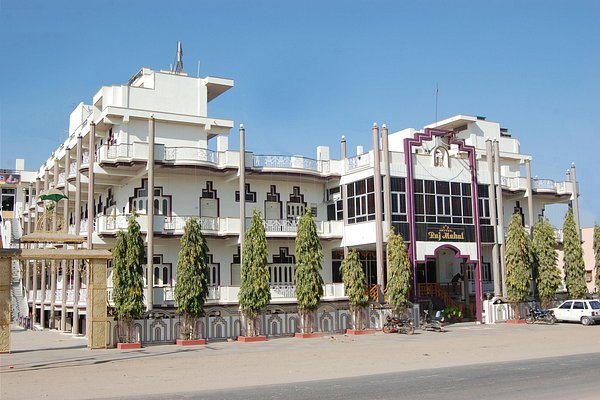

Pingback: Top 10 Places to Visit in Bundi – Complete Travel Guide